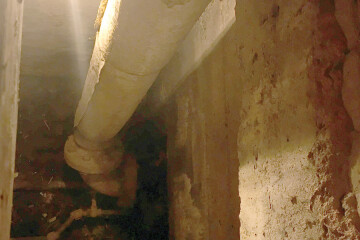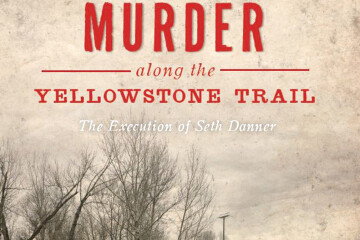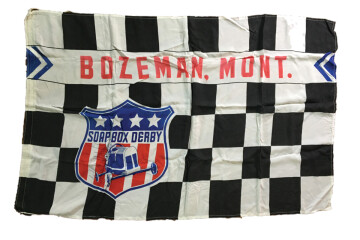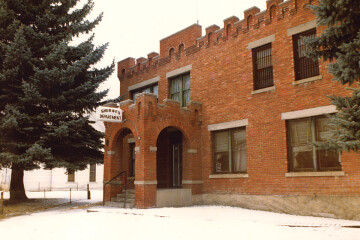Sunday Sinnings
When one digs back into the history of the “Wild West,” one too often finds that culture predominated and most places were not as “wild” as we would probably hope to find. Even Cooke City, located at the Northeast Entrance of Yellowstone National Park and remote from so much of civilization was dominated by peaceful fish frys, neighbors helping neighbors and tiny local squabbles. When one first understands the mundane and tiring pace of daily life in the late 19th century, one then sees the sudden gunfights and brutal murders as we do today, a sensational abnormality. 
One particular incident began in scandal when the Livingston Enterprise speculated about an advertisement placed in the paper on January 24, 1885. The advertisement had been placed by C.C. Lane and cautioned the public “against giving credit to his wife Hattie E. Lane.” The paper noted that there “is generally an interesting inside history to such an advertisement” and that this one was the “story of woman’s infidelity and man’s rascality.” It seems that in September 1884, Hattie Lane, (a former prostitute who carried the nickname “beaver-tooth”) had taken a train east to Manchester, Iowa, to visit with her family. She wrote “frequent letters” in the most “affectionate terms” to her husband over the next three months before reportedly joining Fred P. Johnson in Sioux City and leaving with him “for some unknown destination.” Neil Lane and Fred Johnson were business partners in Cooke who ran a saloon together. According to the Bozeman Weekly Avant Courier, Johnson had managed to “alienate the affections of Lane’s wife from her husband, and so engrafted himself into her good graces as to persuade her to go to the States.” Prior to their departure from Cooke, the Enterprise notes that “both he [Johnson] and Mrs. Lane seem to have played a deep game.” Johnson had been secretly disposing of their partnership property, pocketing the proceeds while also borrowing “small sums of money from any and all who would loan to him until the aggregate obtained in that way must have been a large amount,” all while receiving funds from Neil Lane for his expenses. Meanwhile, Hattie Lane, after a brief altercation with her husband regarding her fidelity to him, had gotten back into Neil’s good graces to the point where “property in the form of deeds and mortgages” were placed in her name. While in Iowa during the latter part of 1884, she disposed of real estate there, with her husband assuming that they would use the money to take a trip to the Pacific Coast together. By mid-January, Hattie had eloped with Johnson instead. According to the Enterprise, Neil had “taken legal steps to recover his property held by her in trust,” but it was noted that beyond that, he would “probably take no measures against his erring wife and her sneaking paramour unless they cross his path.” In March, the Bozeman Weekly Chronicle reported that Neil Lane had been arrested twice, once for accidentally discharging his revolver and once for carrying concealed weapons. 
In April, their paths converged. Matters came to a head when Johnson returned, and Lane sought out ill-fated revenge. Initial reporting occurred on April 28 in the daily Yellowstone Journal under the headline “Sunday Sinnings.” It was noted that the two men had a quarrel over a woman, and that the incident had occurred at a saloon in Bozeman, which was described as “100 feet deep by 25 feet wide” and “the finest place of the kind in the territory.” It was Sanborn & Ponsford’s saloon. One cannot help but note the pride at which the newspaper described the location of the murder. The following day, the paper had the inside scoop and enthusiastically related the story with the headline: “Details of the Killing of Neil Lane – Jealousy the Root of the Trouble.” The article gave readers a slight history of the issues that plagued the threesome and explained that the former Mrs. Lane and Johnson had made and carried out plans to “euchre” her husband out of his business and property before running off together. The paper then proceeded with the details of the recent murder, when all had come to a head:
- the men had been drinking and quarreling in the saloon during the afternoon, Lane taunting Johnson and daring him to a gun fight. Johnson afterward came out of the saloon and when he was about the middle of the crossing Lane overtook him and after some talk took hold of him and forcibly pulled him some distance. John did not seem to resist much more but let Lane lead him into the saloon. When Lane led Johnson into the saloon he held him by the coat lapel with his right hand; he changed his hold to the left and thrust his hand into the pocket where he kept his gun; but he never drew it. Johnson drew his gun and, thrusting it almost against [Lane’s] face, fired. The revolver was a 45-calibre Colt. The bullet entered under Lane’s eye, went out the back of his skull, passed through the drum of the stove and imbedded itself in the hard wood wainscoting of the room. After firing the first shot he jumped back and, as Lane was falling, fired another bullet which passed through the flesh of his hip; he fired a third shot at Lane as he lay dead upon the floor but it missed its mark. Johnson walked out and was shortly afterwards arrested. The feeling against Lane was very bitter, and if he had killed Johnson after tantalizing him as he did, it is believed that he never would have reached jail alive.
However, the Bozeman Weekly Avant Courier states that Johnson denied ever having met up with Lane’s wife Hattie, and it was believed “not improbable that outside parties, bent on mischief, may have been wholly instrumental in working up the antagonism.” The Mineral Argus simply stated: “At Bozeman, Neil Lane was killed by Fred Johnston, his wife’s paramour.” It was also noted in the Livingston Enterprise that Lane had once nearly killed his wife Hattie in an enraged shooting, as it was, she was badly injured.
This Gunsmoke-style drama occurred several times over the years, and in most cases, the killer was acquitted of the crime on grounds of self-defense, as Johnson was. The sentiments of the paper against Lane were, in the end, the same as those of the court system regardless of Johnson’s part in the scheming against Lane. The New North-West reported that “the general drift of the testimony was to the effect that Lane provoked the assault; that he had repeatedly threatened the life of Johnson at Co[o]ke City, Gardiner, Livingston, and Bozeman” and that “everything tended to show that lane had deliberately determined and planned to kill Johnson.” The paper noted that “on the day of the homicide” it had “become a question to be promptly decided by Johnson whether to kill or be killed.” The courtroom that day was “pretty well filled with witnesses and spectators, which showed that more than ordinary interest was being taken in the proceedings and result.” This may have been due to either the public location of the incident in question or the amount of publicity Lane had received in the prior year over what was ultimately a private affair. Those in attendance promptly witnessed the verdict of the case, which ruled the defendant be discharged and acquitted of the crime, which was expected to be met by “universal approval.” It is unknown what became of the saloon once owned by the two men. It was noted that Hattie returned to secure her husband’s body to take back to the states; however, records show Lane is buried in the Sunset Hills Cemetery. The Livingston Enterprise noted that his funeral procession consisted of “the undertaker and grave diggers.”






